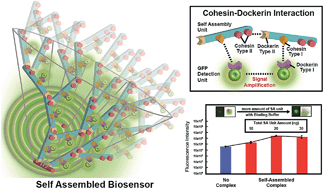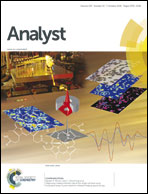Signal amplification by a self-assembled biosensor system designed on the principle of dockerin–cohesin interactions in a cellulosome complex
Abstract
To construct a self-assembled biosensor with signal amplification, a cellulosome system, comprising type I and type II dockerin–cohesin interactions with different specificities, from the anaerobic Clostridia bacterium was applied. The self-assembled biosensor was highly sensitive and achieved 128.1-fold increase in detection levels compared to the control.


 Please wait while we load your content...
Please wait while we load your content...